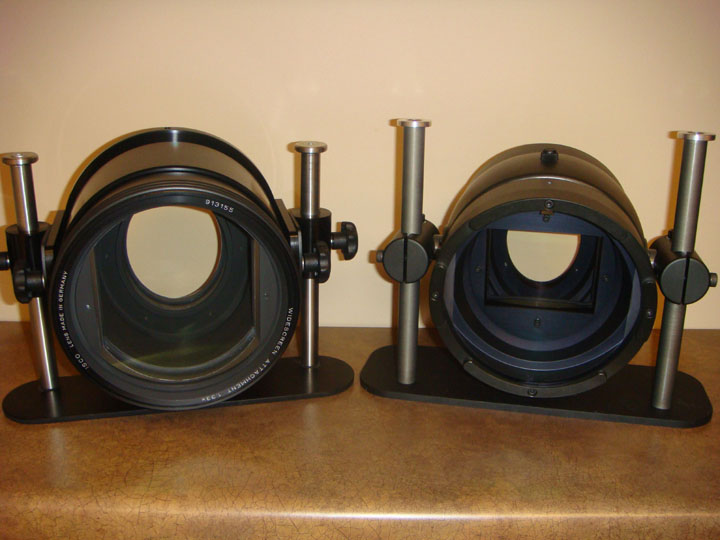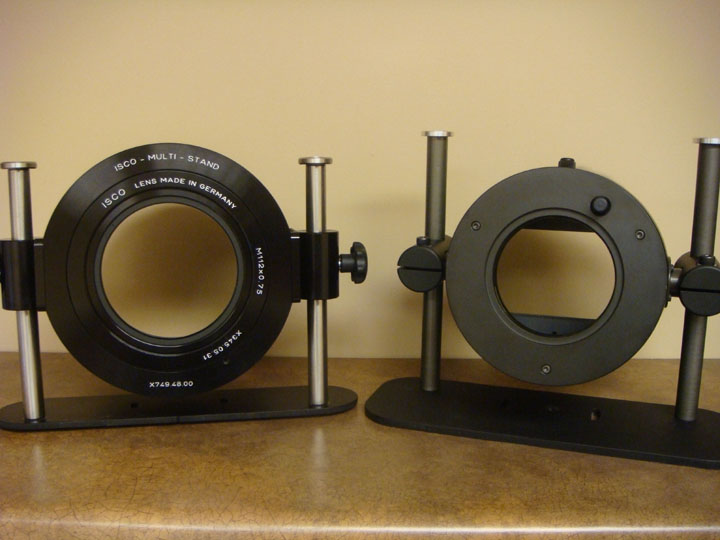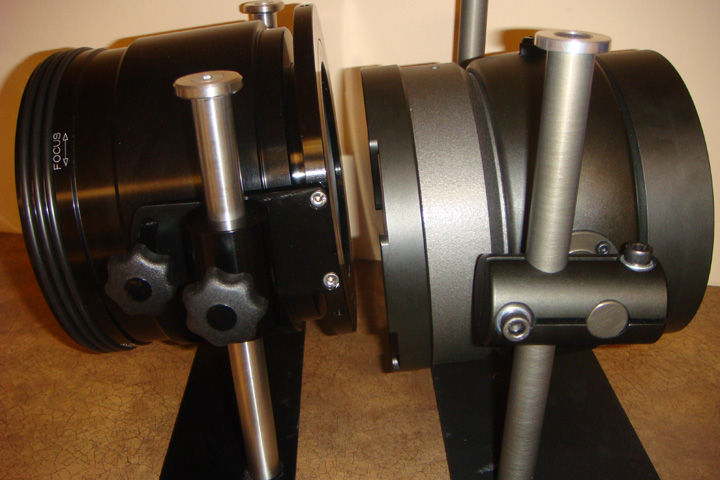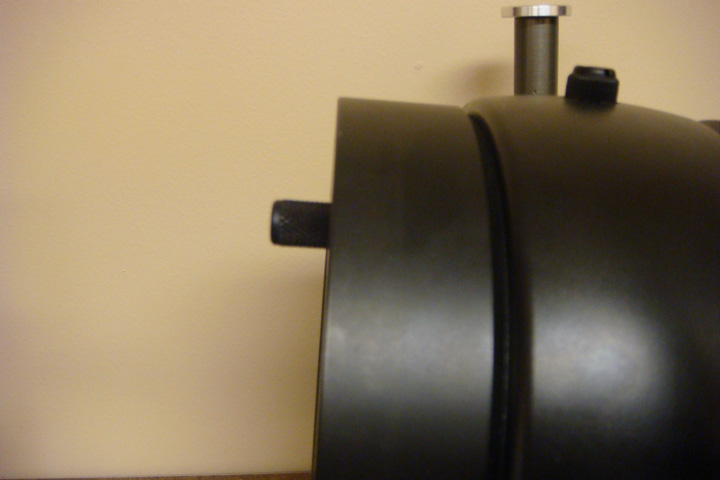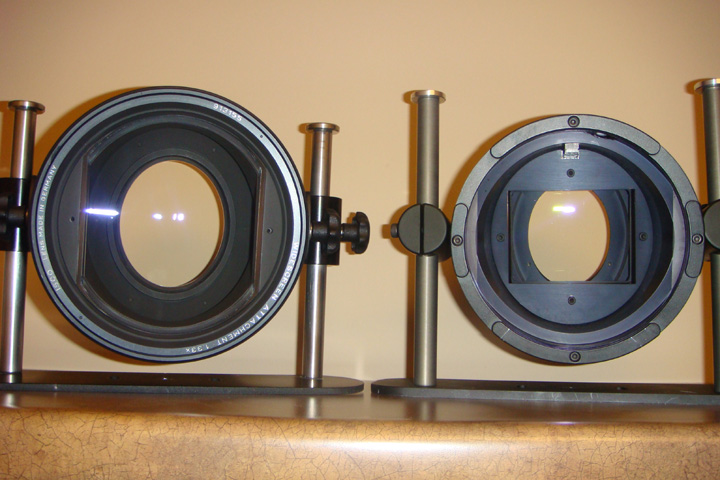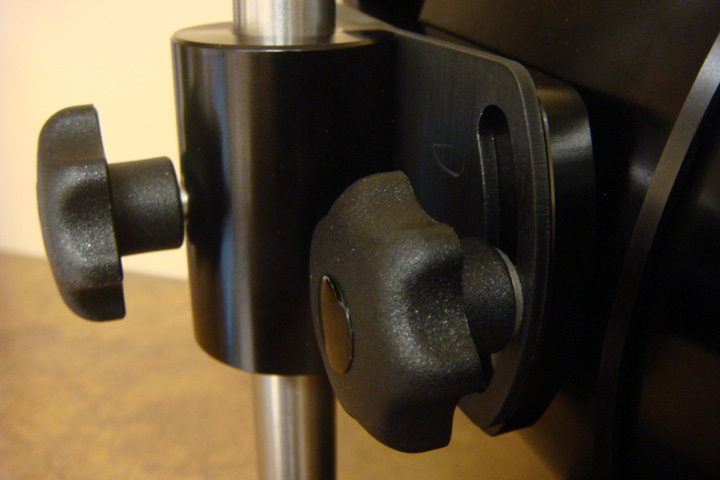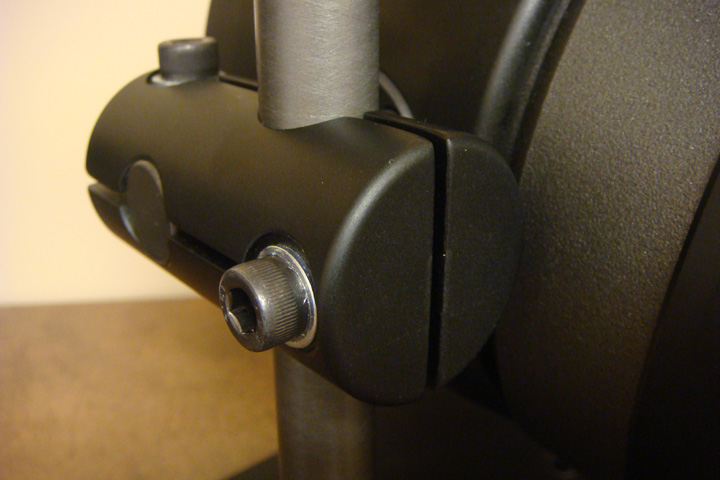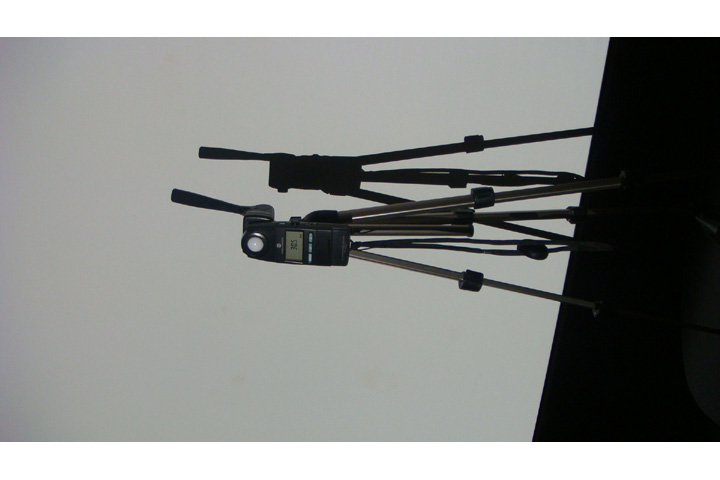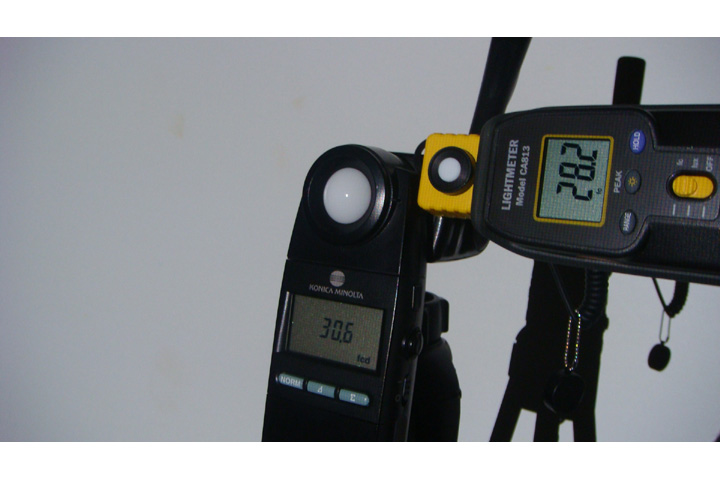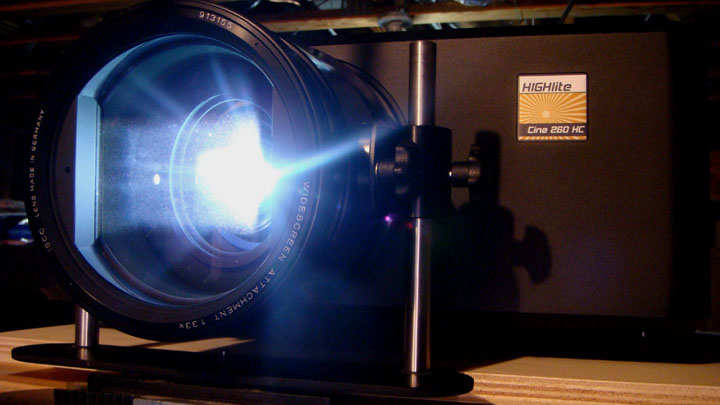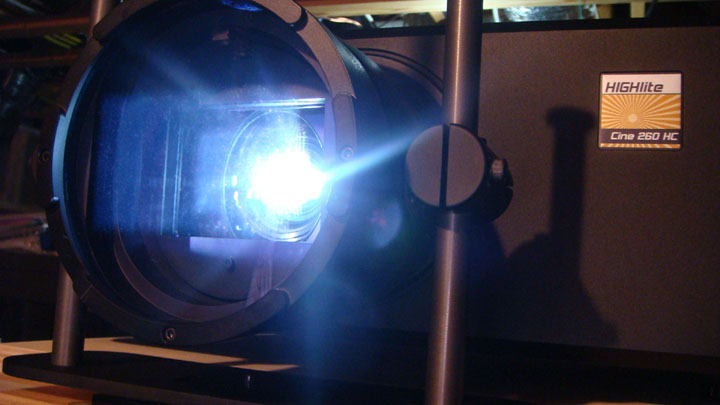Scott Horton, Dec 2010
| Those who know me know that I deal in Isco/Schneider lenses and while I love them, they are very expensive and that puts them out of reach of many users. Over the past couple of years the price increases and EU exchange rates have just made that worse. So I am always interested in new lenses that aspire to do as well as the benchmark lens, the Isco IIIL. There have been a couple such lenses appear in the past year, another one reported to be on the way. To the extent possible I have pursued looking into each of them and offering input on design and features I would like to see in a lens. This past week after a long wait, I received a XEIT 5E1 ("zite" as in "might", aka “Crystalmorphic”) lens for evaluation. The lens I received was a pre-production, or "beta test" sample, which just meant there were a few cosmetic things that would change in production units, but optically, this was it. I've done a pretty good checkout of the lens, given some limits of my environment under renovation, but the results were frankly a little surprising as far as my expectations went. I will say that the architect of this lens has been open to constructive input on initial design features shown to me early on, and I was pleased to have the opportunity to offer some input on mechanical design and aesthetic considerations. Here it is with the Isco IIIL and Multistand II. http://www.techht.com/XEIT/Front-sm.jpg I will preface this by saying that I am interested in importing this lens for sale in the USA; however I have no financial investment or other vested interest in this lens or any other for that matter. My interest is mainly to have an alternative, less expensive lens to pair with the lens transport I manufacture. If you remember that my primary business is selling Isco lenses, my natural bias would be to the incumbent German made lens. However those that know me will tell you that I am quite frank and blunt about such things. I call things as I see them, good or bad, and base my input on facts at hand, being objective and professional in my opinions, particularly public ones. That said, here's a little mini-review of the XEIT 5E1 lens.... MECHANICAL DESIGN Focus mechanism:
In contrast, the 5E1 uses a new design with a "5th optical element" (lens) inside the case, as compared to other ground glass anamorphics which have 4 elements (2 doublets making). The 5E1's front and rear elements (also doublets) do not move, only the internal, 5th element. It is adjusted via a knob that sticks out on the rear of the housing. The knob is easy to turn with one finger. I have expressed concerns that it may not be stiff enough to hold it's position long term but I was told the production units are substantially tighter, this pre-production unit has undergone extensive, multiple lifetime focus testing and that knob was naturally a little looser from same. It moves the inner element in a very small increments which is great for fine tuning, but has the downside of taking a lot of turns to move the lens stop to stop. As this is a one time thing, not a big deal in either case as long as it stays put. I will say that I was not crazy about the rear knob as tested, and the designer knows it, but the tradeoff of having the very expensive cam adjustment like the Isco was the reason given for this design. I understand my knob concerns have already been addressed. The knob sticks out from the rear of the lens substantially (about 0.5” or 12mm) on my pre-production piece, and I was concerned about bumping my prime lens during adjustments. You will need to be careful with this knob when setting up. To help with my concerns, the designer says the lens may be mounted farther away from the prime without issue, just be aware of the knob in any case. It's not on the front of the lens because the front is maximized for glass exit size to accommodate wider throws. Good call. http://www.techht.com/XEIT/5Efosusknob-sm.jpg The 5E1's moving lens element travels on a precision linear bearing, I see no issue with that. On my sample, the knob moved the element without any play or backlash evident. Very nice. As I understand it, the production lenses will start coming with a cosmetic detail that hides the end of the linear bearing from front view, which is not a big deal but would be more icing on the cake. Size: Case design: The 5E1 is interesting in that its internal element is rectangularly masked via its housing, a feature only seen on Schneider's $15,500 Premier and Cinema DLP lenses. That comes with the advantage of rejecting stray light spill out of the projector when in the light path. http://www.techht.com/XEIT/intolens-sm.jpg As compared to other alternative lenses the 5E1, like the Isco, is sealed. No place for dust or contaminants to enter the lens internals. While I did not disassemble it for obvious reasons, I understand the 5E1 is 0-ring sealed. Cleaning a ground glass
anamorphic is not trivial, and as one would expect, neither is disassembling,
reassembling, and realigning elements of a lens to the ultra-fine degree
necessary to produce an image quality on par with an Isco. This lens
and the Isco/Schneider are the only ones to date that are sealed AFAIK.
The 5E1 may not have the military grade submersible sealed housing the
Isco has, but I see no place for dust to enter. Housing and stand
design: The front ring of the housing has some rounded protrusions following the outer curve that give the lens a unique look. As I understand it, this was something done to actually optimize for the shortest throw ratios by removing material where the "corners" of the light beam would be in a *worst case* scenario. It looks cool, and I am told it improves minimum throw ratio capacity by a 0.5, but in rare cases where one could be that tight on vignetting, they may need a IIIL. Overall Fit and finish gets a high score. I prefer the Isco lens housing with it its ultra fine gloss finish black anodize, laser etched branding and specs, its little rubber "grippers" (o-rings) on the front of the lens, etc. but you pay handsomely for those details. The lens sits snugly in an external, integral "ring". This ring looks sort of like a like a giant wedding band. This allows the lens to be freely rotated 360 degrees. This adjustment is called “roll” in my world of lenses. “roll” is turning about the light axis. This roll adjustment is locked with a nylon knob on top of the ring. Fully functional "roll" adjustment is critical in the precise alignment of any anamorphic lens. Without full roll adjustability, you do not have a fully adjustable lens. This is the very first adjustment in setting up an anamorphic lens, and fundamental to a good picture. Without it, a screen, projector and lens would all have to be literally, perfectly installed to not need the roll adjustment. I've never seen a perfect installation, and I always fine tune the roll adjustment. Roll adjustment is a feature that the Isco includes as part of the Multistand II lens mount design. The Multistand comes with the Isco lens and provides this critical roll adjustment. For the 5E1 I would like to see the roll lock knob moved away from the dead center top of the ring, and instead have 2 such knobs located at 45 degrees apart. Not a big deal at all, but this small design change would move more out of sight and and give a second pressure point to lock the lens even more securely. While one knob does fine, 2 would be even better. A little thing, just an enhancement I'd like to see in the future. The Isco’s roll position is locked in place via small nylon tipped setscrew that engages the back of the lens like a little brake. Once set, the Isco lens will not move, even under the firm pressure of its focus ring. Hold onto your hats boys, I will say that if the knob change just mentioned above was implemented, I would prefer the roll adjustment on the 5E1 over the Isco. The 5E1 is superior in that regard. Both work fine, 5E1 works great and could be perfect with a minor change on future models. Mount:
The mount was similar to Isco's with 2 round posts that the lens is adjusted up and down on. The 5E1 posts are hard-anodized aluminum in a dark finish as compared to the Isco's stainless steel posts. Which look better is purely personal preference. The lens height (altitude)
and tilt was adjusted by loosening some Allen screws (socket head cap
screws). I would rather see knobs here BUT as I understand it there
is a different mount in the works. I used to make a mount for the Schneider
CineDigitar lens which was similar in design to the 5E1 mount evaluated.
That mount I made was very touchy about sliding on its posts. In contrast
the action of moving the 5E1 lens up-down on its posts was smooth and
accurate with no hanging or stiction. I had no trouble fine tuning the
height and moving the 5E1 lens. The Isco Multistand sliders however
are flawless and do work effortlessly. Isco gets the slight nod on the
up-down adjustment. Again, both the 5E1 and the Isco mount allow for independent tilt and height adjustment. The 5E1 stand I tested is perfectly good for the job, but the Isco gets the nod on overall design functionality here because it has nice stylish knobs and a little sleeker design, and has smoother motion. As a disclaimer, I participated directly in the design of the Isco Multistand II. The "II" represents the implementation of my changes to the original "Multistand". I will say that current the 5E1 stand is rock solid, will never come loose under any circumstances once adjusted and tightened. There is no mount that would hold a lens more securely, even the Isco. However, its ergonomics and usability make it a little more difficult than the Isco Multistand II. However it’s independent functionality is just as good as the Isco. Knobs would appear to be an improvement to remove the need for tools to adjust. But, this is also a one-time per install adjustment, having a lens that absolutely WILL NOT move once tightened, 5E1 gets points there. I do think novices will want to "play" with the alignment and having a toolless design (knobs) would help in that regard. Finally, the base plate of the 5E1 sample provided included pre-machined holes to directly attach the 5E1 to the CineSlide including properly machined curved slotted holes that allow for precision yaw (point lens left-right) adjustments. It actually allowed for more yaw than I think would ever be required and I have advised the designer he can shorten those slots some. The base plate of the 5E1 is a little larger than the plate we make for Isco, but it is designed to double as a tabletop stand for someone who uses the lens without a CineSlide (for shame :) ). I have suggested a slightly different footprint of the stand that would leave it stable on a tabletop, but make it more compatible with a particular case of CineSlide shelf mounting brackets we make for some customers. We are very proud that the 5E1 designer as well as other companies design for CineSlide integration. http://www.techht.com/XEIT/IscoAdjust1-sm.jpg OPTICS Of course mechanicals are of no interest if the lens itself isn't good. The 5E’s optics consist of three “lenses” instead of the usual two that are found in other anamorphic lenses. The entrance and exit lenses are fixed, and there is an internal moving lens. Optical performance was my biggest concerns, as is probably what you were waiting to find out about. To check this out I used my DPI 3 chip DLP projector. This is not the best thing to test with because it does not have perfect convergence at the sides, but I didn't have a spare single chip with good optics sitting around to test with. My projector does have very good optics however (constant aperture Minolta lens), much better than normal projectors, as it should be on a $30k unit. So to overcome any anomalies of the panel alignment imperfection, I used a green-only pattern to test focus, and geometry. Green was used because green occupies the center frequency of visible light and I understand lens designers often use it for testing lens performance. For light measurements I used my own GetGray calibration DVD which includes a "maximum white" and a "maximum black" pattern. These are encoded at below black and above white to ensure the PJ is using its full dynamic range. Again, I tested against the Isco IIIL on my system as the baseline "king" of lenses. Brightness: The first thing tested was brightness. For the test I have 2 illuminance meters. A $1000 Minolta T-10, and a less expensive, but NIST certified AEMC CA-813. My NIST cert has recently expired, but I never have put a lot of faith in these meters ability to produce identical results as compared meter to meter anyway. They are however very good and pretty repeatable measuring differences. There is a whole thread on this subject on the AVS forum. I use them to monitor the brightness of my bulbs and see how they are aging, as well as to compare other projectors to my own, using the same meter. http://www.techht.com/XEIT/Minolta.jpg My test environment is not ideal as it is a room under reconstruction. My front wall is however covered in black velvet back to about 4' back on each sidewall. Remaining walls are dark brown. I used a 54" tall matt white test screen, and the room is about 18' wide. It is 100% light controlled (no windows, etc,). No white walls, but no batcave either. As my tests were more to check how the 5E1 looked relative to the Isco, any room issues would be equal for both so I say any room influences were inconsequential for this purpose. The throw ratio as tested was about 1.65. I measured the brightness at the screen center with and without the lens. All measurements were taken with the main meter on a tripod, untouched between measurements of the lenses. I also measured the brightness near the side of the screen. If you just looked at the simple brightness differences you would not have the whole story. One of the other parameters I tested came as a little bit of a surprise and had to do with how each lens varied in stretch at various points on the screen. Those variations were taken into account with brightness measurements. On my screen the 5E1 measured about 1 ftc (1 ftL assuming a unity gain screen) less than the Isco. That works out to about 10.8 lumens. I did not do a full ANSI (9 point) test of each lens; it was only measured in the middle and near the side. Factoring in the expansion factors and the baseline (no lens) the 5E1 gets just over a 1% hit on light loss vs. the Isco. Isco wins on light loss as expected; however the 5E1 wins on distortion, and did not lose by much on light. Geometry Pincushion:
Expansion: The target expansion for the lens is 1.33, here’s how the measurements came out: SCREEN POSITION
(5E1) (ISCO) As you can see the grid in the middle wasn't quite expanded by 1.33 and the grid at the side was expanded more than 1.33. Neither are perfect, the 5E1 performs better with a stretch closer to the target through the range. To quantify, on a 54" screen the grid's measurements differed by about 11 mm (center vs. side) for the Isco, and about 5 mm (center vs. side) with the 5E1. In reality, neither jumps out as "off" to my eye over that large of a screen. I understand geometric distortion is a function of throw ratio, the smaller the TR, the worse it gets. Therefore, at higher throw ratios it should be noted that the difference between the two lenses will be smaller, although I believe the 5E1 would still win here. Looking at the glass itself, they both appeared clear, free of any visual defects. There is a difference in how the glass "looks" with a full white pattern shining through it. The Isco (which passes slightly more light) had and very light "frost" look in the glass where the beam passes vs. the 5E1 that did not show as much. The 5E1 appears clearer FWIW. It is definitely not a cloudy low quality piece of glass. I assume the difference in the Isco’s appearance is a property of their coatings. Note these photos show some "spots", particularly in the Isco photo that aren't there, they are camera lens issues from looking into the bright light source. Also the angle of the Isco photo makes it look like the light beam is touching the right side of the lens, it is not nor does it look like it does in real life. http://www.techht.com/XEIT/IscoLit.jpg Ghosting: ON/OFF Contrast: Lens-out (no lens) reads 0.012 fc. So, dimmer as expected when the light is expanded. However in max white, the 5E measured lower than the Isco, as described previously. 140.8 vs. 133.7 fc in this case (measured very close to the PJ). However note that the differing expansion at screen center has a bearing on the difference between the 2 lens’ measurements. Brightness again at screen center (max white / max black), CR 1.78 - 174.9 / .012, 14,575:1 For on-off measurements in practical terms, these are NOT significantly different IMO anyway. But, as these measurements were taken at the screen center, and the expansion properties of the lenses are different at there, coupled with the inability of the meter to measure very accurately at very low light levels, and I would say that difference in on-off CR shown by this particular test is NOT substantial, and is inconclusive. Easliy call this one a draw. ANSI Contrast Performance: 5E - 183.6 / .446 (412:1) Again, the differences are insignificant on this quick test. Both lenses perform very close. Summary: The first look at this lens was impressive. I can see pros and cons to it vs. an Isco. It has for the first time I know of bested the Isco in one category, more even geometric expansion. It does this at the cost of a very small hit on light, depending on the installation, that may not be an issue. Mechanicals:
The user will need to take care when adjusting a 5E1 to ensure the focus knob does not interfere or bump the prime lens especially if the lens needs to be mounted very close to the projector. The stand allowed for ALL the proper adjustments including INDEPENDENT "height/altitude", "tilt", "yaw", and the very important "roll" adjustability. There was room for very small improvements on the existing mechanical design overall, but certainly no show stoppers. If a new stand is produced, I would reserve judgment until I saw it. I would hope that it has these same features, including retention of the stability and security of a dual post design. Optics:
Contrast performance was, within the limits of my measuring equipment, on par with the Isco. The differences were not substantial in these tests IMO. If the manufacturer is able to produce the 5E1 with consistent quality optics, and with the same or improved features, then this lens will be a very good, and lower cost alternative to other lenses. As long as production units are the same or better than this pre-production sample, I have no problem recommending this lens as a viable alternative to the presumably much more expensive German made products. USA pricing is to be determined. |
